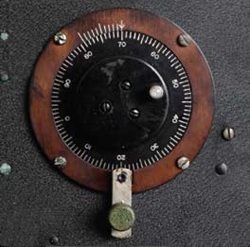
I’ve learned to be careful in judging the provenance or status of the tools at my disposal., and have discovered that my preconceived ideas have an influence on my own success or failure. That’s not the fault of gear.
So I’ve adopted the view that I can successfully use any piece of equipment as long as it has a sufficiently low noise floor, appropriate headroom and an absence of sonic “funkiness”.
Anything beyond these factors is lagniappe (lan yap), a Cajun word meaning “something extra”.
The problem with lagniappe is that it tends to make us fat, or more specifically, bloats our thinking. Lagniappe promotes the welfare mentality. It leads us to believe that we can’t just make do with the bare necessities, and lagniappe belies the simpler truth: when it comes to producing quality sound, less is usually more, less is usually better. The more we add, the more chance we have of screwing it up.
In early recording and broadcasting, consoles only had one way to control volume on each channel, and that was the gain adjustment. What? Mixing via the gain knob?? Yup. Simple and effective. Either it was right or it wasn’t, and there was only one place to make it so.
Contrast that with modern consoles often providing four or five gain stages that have a direct influence over the level of the output. Sweet. In the right hands. (And conversely scary to the wise.)
The problem is that along the way, yesterday’s techniques for excellence have been lost on so many of us. We don’t come to this field equipped with solid production technique, and then we’re presented with so many choices.
Again: the more we add, the more chance we have of screwing it up.
There’s hope, however. We just need to embrace the dark side. In other words, look at our habits and admit that what we’re doing might not be producing the results we desire. Accepting this fact is the first step to moving on to a much better direction.
The most basic key to building excellence is to learn good technique in simplicity, and then evolve it as things get more complex, and as understanding increases.
I’m betting that at least a few of you are ready to embrace some “revolutionary” thinking and methods. The fun part is that the foundation of this revolution is largely based upon proven and reliable, not new and improved.
Since his start more than 30 years ago on a Shure Vocalmaster system, James Cadwallader remains in love with live sound. Based in the western U.S., he’s held a wide range of professional audio positions, including live mixing, recording, and technician duties.
